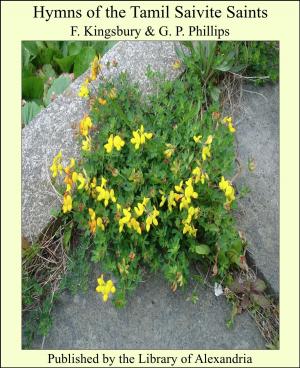| Author: | Sir Walter Scott | ISBN: | 9781465619020 |
| Publisher: | Library of Alexandria | Publication: | March 8, 2015 |
| Imprint: | Language: | English |
| Author: | Sir Walter Scott |
| ISBN: | 9781465619020 |
| Publisher: | Library of Alexandria |
| Publication: | March 8, 2015 |
| Imprint: | |
| Language: | English |
Although few, if any, of the countries of Europe, have increased so rapidly in wealth and cultivation as Scotland during the last half century, Sultan Mahmoud's owls might nevertheless have found in Caledonia, at any term within that flourishing period, their dowery of ruined villages. Accident or local advantages have, in many instances, transferred the inhabitants of ancient hamlets, from the situations which their predecessors chose with more respect to security than convenience, to those in which their increasing industry and commerce could more easily expand itself; and hence places which stand distinguished in Scottish history, and which figure in David M'Pherson's excellent historical map, can now only be discerned from the wild moor by the verdure which clothes their site, or, at best, by a few scattered ruins, resembling pinfolds, which mark the spot of their former existence. The little village of St. Ronan's, though it had not yet fallen into the state of entire oblivion we have described, was, about twenty years since, fast verging towards it. The situation had something in it so romantic, that it provoked the pencil of every passing tourist; and we will endeavour, therefore, to describe it in language which can scarcely be less intelligible than some of their sketches, avoiding, however, for reasons which seem to us of weight, to give any more exact indication of the site, than that it is on the southern side of the Forth, and not above thirty miles distant from the English frontier. A river of considerable magnitude pours its streams through a narrow vale, varying in breadth from two miles to a fourth of that distance, and which, being composed of rich alluvial soil, is, and has long been, enclosed, tolerably well inhabited, and cultivated with all the skill of Scottish agriculture. Either side of this valley is bounded by a chain of hills, which, on the right in particular, may be almost termed mountains. Little brooks arising in these ridges, and finding their way to the river, offer each its own little vale to the industry of the cultivator. Some of them bear fine large trees, which have as yet escaped the axe, and upon the sides of most there are scattered patches and fringes of natural copsewood, above and around which the banks of the stream arise, somewhat desolate in the colder months, but in summer glowing with dark purple heath, or with the golden lustre of the broom and gorse. This is a sort of scenery peculiar to those countries, which abound, like Scotland, in hills and in streams, and where the traveller is ever and anon discovering in some intricate and unexpected recess, a simple and silvan beauty, which pleases him the more, that it seems to be peculiarly his own property as the first discoverer.
Although few, if any, of the countries of Europe, have increased so rapidly in wealth and cultivation as Scotland during the last half century, Sultan Mahmoud's owls might nevertheless have found in Caledonia, at any term within that flourishing period, their dowery of ruined villages. Accident or local advantages have, in many instances, transferred the inhabitants of ancient hamlets, from the situations which their predecessors chose with more respect to security than convenience, to those in which their increasing industry and commerce could more easily expand itself; and hence places which stand distinguished in Scottish history, and which figure in David M'Pherson's excellent historical map, can now only be discerned from the wild moor by the verdure which clothes their site, or, at best, by a few scattered ruins, resembling pinfolds, which mark the spot of their former existence. The little village of St. Ronan's, though it had not yet fallen into the state of entire oblivion we have described, was, about twenty years since, fast verging towards it. The situation had something in it so romantic, that it provoked the pencil of every passing tourist; and we will endeavour, therefore, to describe it in language which can scarcely be less intelligible than some of their sketches, avoiding, however, for reasons which seem to us of weight, to give any more exact indication of the site, than that it is on the southern side of the Forth, and not above thirty miles distant from the English frontier. A river of considerable magnitude pours its streams through a narrow vale, varying in breadth from two miles to a fourth of that distance, and which, being composed of rich alluvial soil, is, and has long been, enclosed, tolerably well inhabited, and cultivated with all the skill of Scottish agriculture. Either side of this valley is bounded by a chain of hills, which, on the right in particular, may be almost termed mountains. Little brooks arising in these ridges, and finding their way to the river, offer each its own little vale to the industry of the cultivator. Some of them bear fine large trees, which have as yet escaped the axe, and upon the sides of most there are scattered patches and fringes of natural copsewood, above and around which the banks of the stream arise, somewhat desolate in the colder months, but in summer glowing with dark purple heath, or with the golden lustre of the broom and gorse. This is a sort of scenery peculiar to those countries, which abound, like Scotland, in hills and in streams, and where the traveller is ever and anon discovering in some intricate and unexpected recess, a simple and silvan beauty, which pleases him the more, that it seems to be peculiarly his own property as the first discoverer.















